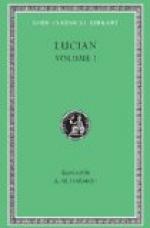LIST OF ILLUSTRATIONS.
Statue to Minute Man
Interior of Independence Hall, Philadelphia
Tomb of General Grant, Riverside Park
A Memory of Rip Van Winkle
The Exact Center of United States
Brigham Young’s Grave, Salt Lake City
Chief Rain-in-the-Face and his Favorite Pony
The Cowboy as He Is
Civilized Indians
An Uncivilized Savage
The Belle of the Pueblo
Custer Battlefield and Monument
The Old French Market at New Orleans
The Prettiest Chinese Woman in America
Yellowstone Falls
In and Around Yellowstone Park
A Marvel of Magnificence
Climbing Pike’s Peak by Rail
Hieroglyphic Memoirs of Past Ages
A Fin de Siecle Pleasure Steamer
Whaleback Steamer on the Lakes
Two Views of Mount Tacoma
A Restful Southern Home
MY NATIVE LAND.
CHAPTER I.
OUR NATION’S BIRTH.
The Story of Liberty Bell—Impartial Opinions
on the Revolutionary
War—The Shot that was Heard Around the
World—The First Committee of
Safety—A Defeat which Equaled a Victory—Washington’s
Earnestness—To
Congress on Horseback—The First 4th of
July Celebration.
It was not until April 19th, 1775, that the shot was fired which was “heard around the world.” But the struggle for American Independence was really started nearly a quarter of a century earlier, when on the afternoon of August 27th, 1753, Liberty Bell was rung to call together the Assembly of the Province of Pennsylvania.
In the old days of town meetings, training days, town schools and Puritans, bells took a more prominent part in public affairs than they do to-day. It was usual to call the people together for purposes of deliberation by means of a village or town bell, and of these bells the one to which we refer was the most important and interesting. Liberty Bell is well named. It was ordered in the year 1751, and it was delivered a year later. Shortly afterwards, it cracked, and had to be recast, but in June, 1753, it was finally hung in the Pennsylvania State House at Philadelphia. It has never been removed from the building except on two occasions. The first of these was in 1777, when it was taken to Allentown for safety, and the second in 1885, when it was exhibited at New Orleans.
This bell, which sounded the death-blow to tyranny and oppression, was first rung to call together the Assembly, which immediately resolved to insist upon certain rights which had been denied the colonists by the British Crown. Eighteen months later, it was again rung to announce the meeting at which the rights of the colonists were sternly defined and insisted upon. In 1765, it convened the meeting of the Assembly at which it was resolved to be represented at the Congress of the Colonies in New York, and a month later it was muffled and tolled when the “Royal




